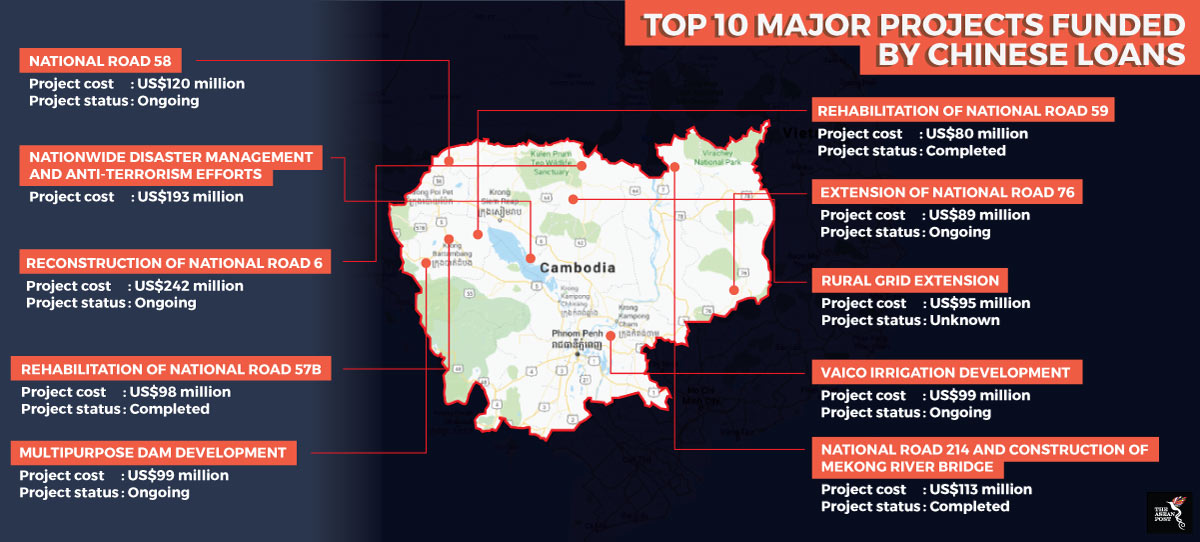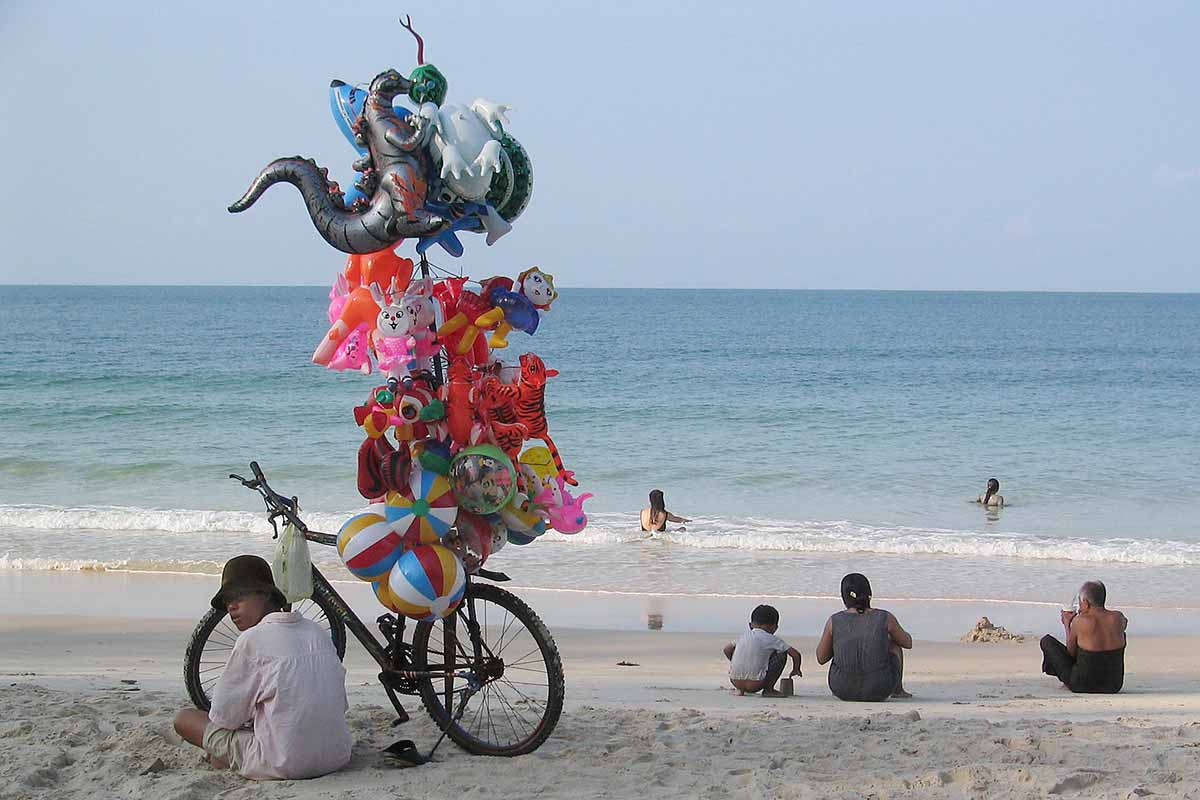Sihanoukville used to be a sleepy coastal town in south Cambodia. Its beaches were known for their quiet, cosy – albeit a little seedy – atmosphere that attracted mostly families, individual travellers, and backpackers. Aside from the on-goings of tourists and those connected with the country’s sole deep-water port, nothing much changed. That was until the Chinese investment flooded in, driven by China’s Belt and Road Initiative (BRI).
Fast forward to 2018 and the once-tranquil city has been transformed beyond recognition. Now an enclave of Chinese investments, Sihanoukville is peppered with Chinese-run, -operated and -patroned hotels, apartments towers, restaurants and gambling dens. The area is dotted with Chinatowns, festooned with neon signs in Mandarin taking the place of Khmer and English language signs.
The magnitude and make-up of its tourists has also changed with the new influx. Tourism increased more than 700 percent between 2012 to 2017. Last year, Sihanoukville received one million local tourists and 470,000 foreign visitors, of which more than 25 percent were from China. Some of the long-term western tourists living in the city have either been pushed or kicked out to make way for better paying Chinese visitors. Some have moved out or avoid the area because of the loss of tranquillity.
Within the BRI framework, Sihanoukville is known as the first port of call on China’s BRI. The area, previously known as Kampong Som before it was renamed after former king Norodom Sihanouk, received US$4.2 billion in Chinese investment for power plants and offshore oil operations.
Beyond Sihanoukville, with the strong support of Prime Minister Hun Sen, the BRI has spread Chinese investment further inland into the Kingdom. Cambodia is a key beneficiary of infrastructure projects under China’s trillion-dollar BRI. This includes financing for new highways, national roads, power plants, airports, and special economic zones (SEZs) dedicated to technology innovations. China has also recently bequeathed US$100 million in aid to help modernise Cambodia's military.

Source: Various
Chinese investment and related discontent
With the massive influx of Chinese investments, loans, and aid, many have cautioned Cambodia on China’s debt-trap diplomacy. The Chinese loan model, often characterised by opaque contracts, exorbitant interest rates, predatory loan practices, and corrupt deals, has left smaller countries further debt ridden and in danger of losing their sovereignty.
The Chinese financial influx is also often ‘closed looped’, with few meaningful opportunities for local players. Chinese companies often do business with other Chinese companies, bringing in Chinese workers. Chinese tourists, often travelling in groups handled by Chinese tourist agencies, want to stay at Chinese-run hotels and eat at Chinese restaurants. Local businesses and people are often forced out of any potential economic gain. The Chinafication of Sihanoukville has also stirred local resentment as more landless Cambodians are pushed out of Sihanoukville development deals while more Chinese workers are brought in to cater to the growing demand.
Along with the steady influx of Chinese workers and visitors, is an increase in vices and criminal activities. Recently, 50 Chinese nationals were detained in Sihanoukville as the provincial authorities carried out a crackdown on prostitution rings. Last year, a number of arrests were made on Chinese nationals working as pimps, as well as prostitutes, in the seaside town. Chinese nationals, along with locals and other foreigners, have also been arrested during illegal drug raids on pubs. In Cambodia, 68 percent of those arrested in the first six months of the year were Chinese citizens, far outnumbering others nationals.
What is happening in Sihanoukville is a clear warning to all other investment destinations along the BRI route. While foreign aid and investment from China can benefit receiving countries who are often in dire need of investment and development assistance, their governments need to figure out how to balance this process without losing their national identities and sovereignty. Social and cultural impact assessments and studies, on top of environmental impact assessments, need to be undertaken to enable authorities to project and protect against the negative impacts and changes.
Local or provincial authorities and communities, as well as other stakeholders, need to have a bigger say in how these Chinese investments are manifested, regardless of the pressure to comply from their leaders who are looking for a quick-fix for the national debt. If not managed well, BRI investments could result in the loss of identity and sovereignty for the receiving nation as it painfully morphs into another Chinese territory.
